
 TECHSPEC® components are designed, specified, or manufactured by Edmund Optics. Learn More
TECHSPEC® components are designed, specified, or manufactured by Edmund Optics. Learn More
| Volume Pricing | |
|---|---|
| Qty 1-9 | ₹2,141 each |
| Qty 10-24 | ₹1,927 each |
| Qty 25-49 | ₹1,713 each |
| Need More? | Request Quote |
TECHSPEC® Uncoated Plano-Convex (PCX) Lenses have a positive focal length, making them ideal for collecting and focusing light in imaging applications. These lenses excel in optical systems by concentrating light onto a detector or imaging plane, enhancing clarity and detail. They are also valuable for a variety of applications involving emitters, detectors, lasers, and fiber optics.
Plano-Convex lenses are ideal for a multitude of optics and photonics applications, including biotech instruments such as DNA sequencers and polymerase chain reaction (PCR) testing platforms. Their uncoated design ensures consistent performance across a broad wavelength range, making them versatile and reliable components for various optical setups.
TECHSPEC Uncoated Plano-Convex (PCX) Lenses are available in a wide variety of diameters and focal lengths. Identical designs of these PCX lenses are also offered with broadband anti-reflective (BBAR) coatings, which include MgF2, VIS 0°, VIS-NIR, NIR I, NIR II, VIS-EXT, and YAG-BBAR.
These coatings minimize surface reflections and maximize light transmission across different spectral ranges, ensuring optimal performance in various imaging and photonics applications. Whether for general use or specialized needs, TECHSPEC® PCX Lenses deliver precision and adaptability to enhance the effectiveness of optical systems.
Customers can utilize TECHSPEC® Uncoated Plano-Convex (PCX) Lenses in various ways:
By integrating TECHSPEC® Uncoated PCX Lenses into these systems, customers can achieve improved optical performance and enhanced functionality across various photonics and optical applications.
TECHSPEC Uncoated Plano-Convex (PCX) Lenses are available in a variety of diameters, focal lengths, and optical materials. Plano-convex lenses are manufactured from high quality materials such as UV Grade Fused Silica, N-BK7 Optical Glass, and a wide variety of Infrared (IR) materials. Different materials are useful for a variety of applications; review our lens material selection tech note for additional information.
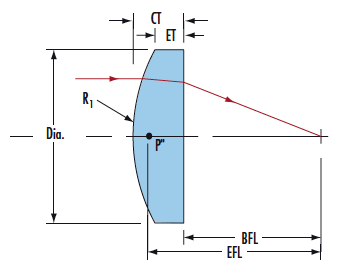
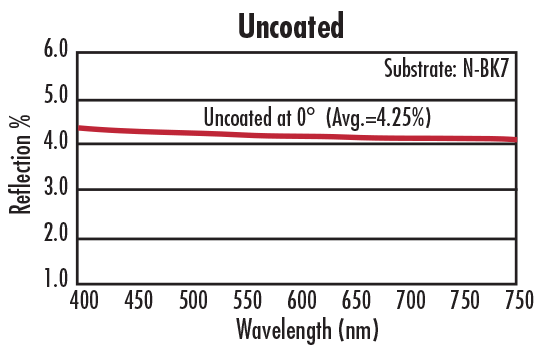
| N-BK7 | |
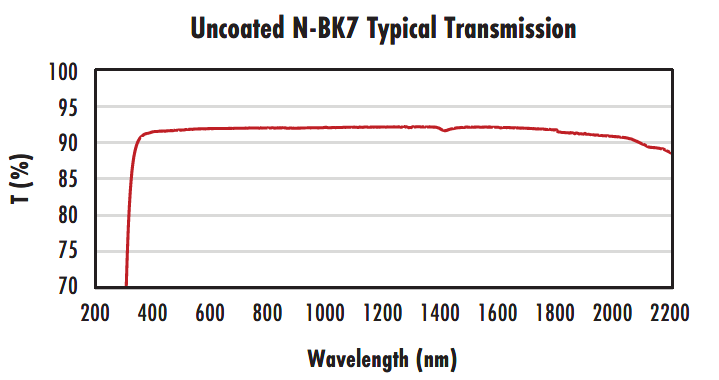 |
Typical transmission of a 3mm thick, uncoated N-BK7 window across the UV - NIR spectra. |
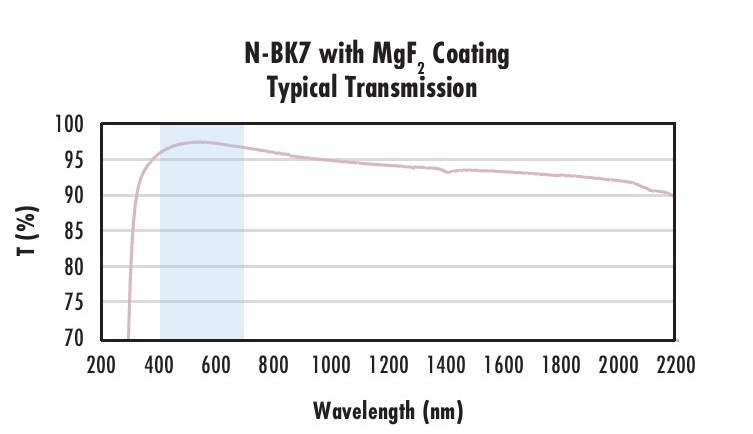 |
Typical transmission of a 3mm thick N-BK7 window with MgF2 (400-700nm) coating at 0° AOI. The blue shaded region indicates the coating design wavelengh range, with the following specification: Ravg ≤ 1.75% @ 400 - 700nm (N-BK7) Data outside this range is not guaranteed and is for reference only. |
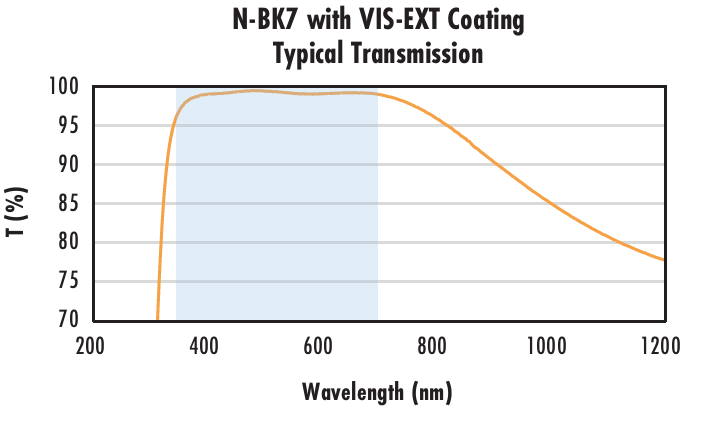 |
Typical transmission of a 3mm thick N-BK7 window with VIS-EXT (350-700nm) coating at 0° AOI. The blue shaded region indicates the coating design wavelengh range, with the following specification: Ravg ≤ 0.5% @ 350 - 700nm Data outside this range is not guaranteed and is for reference only. |
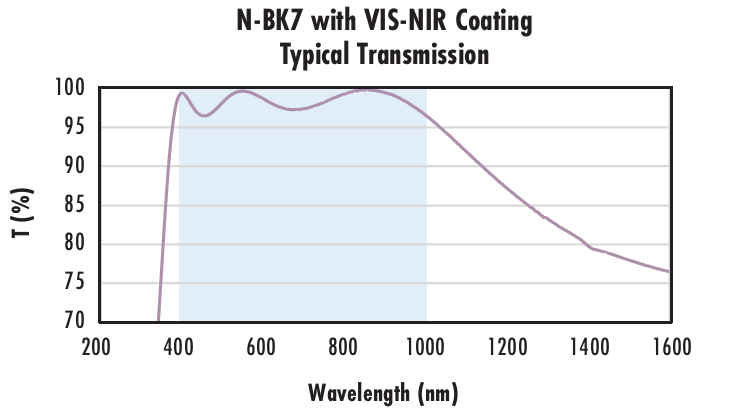 |
Typical transmission of a 3mm thick N-BK7 window with VIS-NIR (400-1000nm) coating at 0° AOI. The blue shaded region indicates the coating design wavelengh range, with the following specification: Rabs ≤ 0.25% @ 880nm Data outside this range is not guaranteed and is for reference only. |
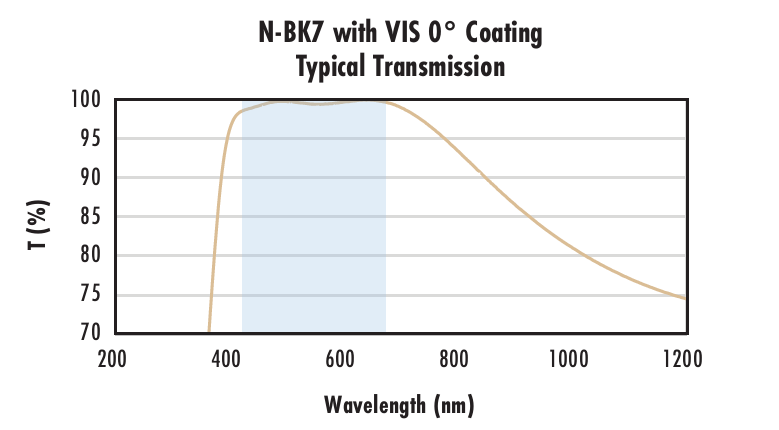 |
Typical transmission of a 3mm thick N-BK7 window with VIS 0° (425-675nm) coating at 0° AOI. The blue shaded region indicates the coating design wavelengh range, with the following specification: Ravg ≤ 0.4% @ 425 - 675nm Data outside this range is not guaranteed and is for reference only. |
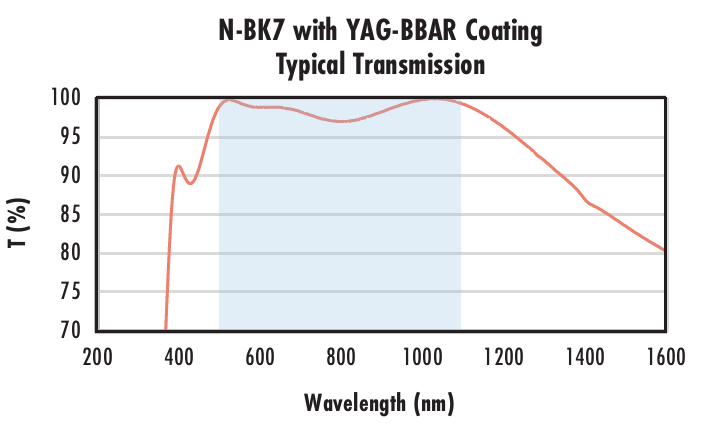 |
Typical transmission of a 3mm thick N-BK7 window with YAG-BBAR (500-1100nm) coating at 0° AOI. The blue shaded region indicates the coating design wavelengh range, with the following specification: Rabs ≤ 0.25% @ 532nm Data outside this range is not guaranteed and is for reference only. |
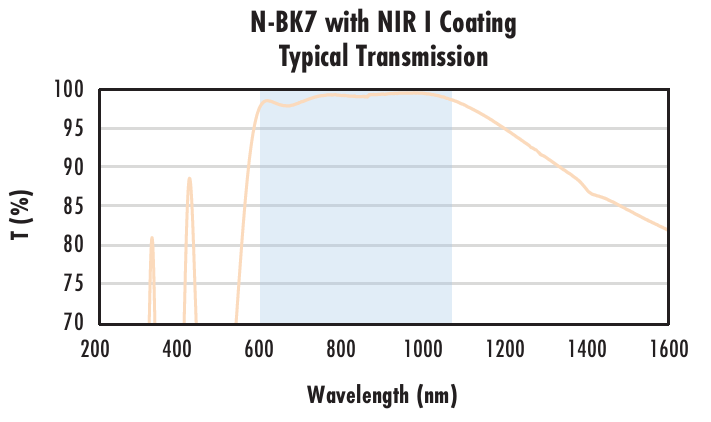 |
Typical transmission of a 3mm thick N-BK7 window with NIR I (600 - 1050nm) coating at 0° AOI. The blue shaded region indicates the coating design wavelengh range, with the following specification: Ravg ≤ 0.5% @ 600 - 1050nm Data outside this range is not guaranteed and is for reference only. |
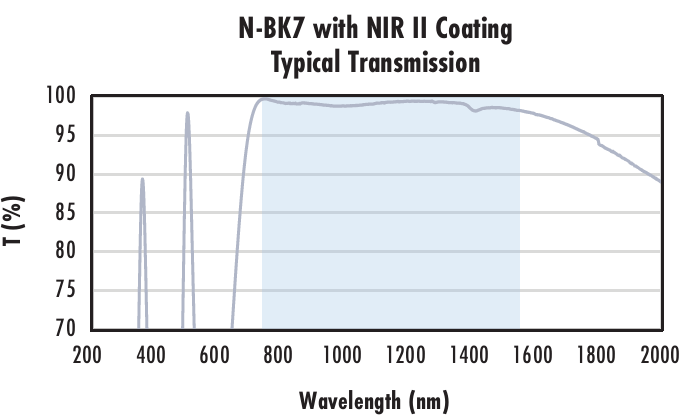 |
Typical transmission of a 3mm thick N-BK7 window with NIR II (750 - 1550nm) coating at 0° AOI. The blue shaded region indicates the coating design wavelengh range, with the following specification: Rabs ≤ 1.5% @ 750 - 800nm Data outside this range is not guaranteed and is for reference only. |
Edmund Optics offers comprehensive custom manufacturing services for optical and imaging components tailored to your specific application requirements. Whether in the prototyping phase or preparing for full-scale production, we provide flexible solutions to meet your needs. Our experienced engineers are here to assist—from concept to completion.
Our capabilities include:
Learn more about our custom manufacturing capabilities or submit an inquiry here.
or view regional numbers
QUOTE TOOL
enter stock numbers to begin
Copyright 2023, Edmund Optics India Private Limited, #267, Greystone Building, Second Floor, 6th Cross Rd, Binnamangala, Stage 1, Indiranagar, Bengaluru, Karnataka, India 560038
California Consumer Privacy Acts (CCPA): Do Not Sell or Share My Personal Information
California Transparency in Supply Chains Act
The FUTURE Depends On Optics®